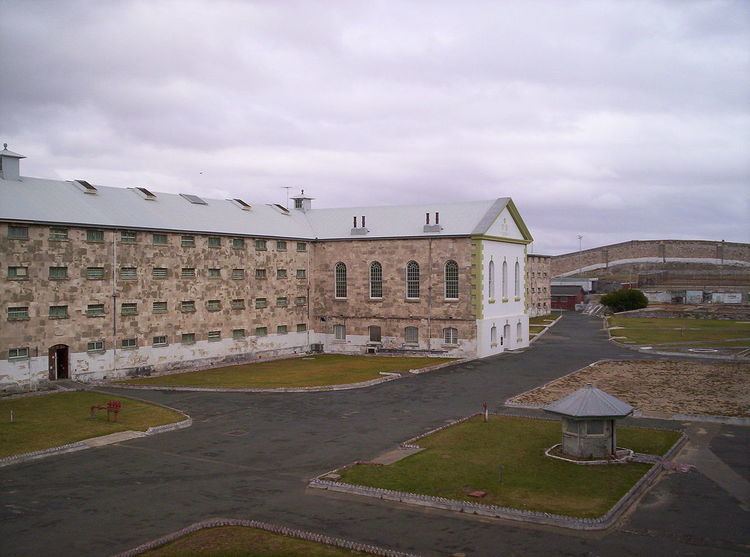 | ||
The Australian prison system is a part of the Australian criminal justice system. As of 2014, 51% of Australian prisoners were convicted of a violent crime.
Contents
- History
- Life imprisonment in Australia
- Capital punishment in Australia
- Private prisons
- Prison museums
- Former prisons
- References
Prisons in Australia are operated for the detention of minimum, medium and maximum security prisoners convicted in state and federal courts. There is no separate federal prison infrastructure.
History
New South Wales, as the founding site for English settlement in Australia in 1788, has had prisons for as long as Australia has had European settlement. The first Australian colony was founded at Port Jackson (now Sydney) on 26 January 1788, and marked the commencement of many decades of convict arrivals from the United Kingdom.
Life imprisonment in Australia
In Australia, life imprisonment is of indeterminate length. The sentencing judge usually sets a non-parole period after which the prisoner can apply for release under parole conditions, or in the case of a criminal who has committed particularly heinous crimes, the sentencing judge may order that the person is "never to be released".
Capital punishment in Australia
Capital punishment had been part of the legal system of Australia since British settlement and during the 19th century, crimes that could carry a death sentence included burglary, sheep stealing, forgery, sexual assaults, murder and manslaughter and there is one reported case of someone being executed for "being illegally at large" and during the 19th century, these crimes saw about 80 people hanged each year throughout Australia.
The death penalty was abolished in Queensland in 1922, Tasmania in 1968, the Commonwealth in 1973, Northern Territory in 1973, Victoria in 1975, South Australia in 1976, ACT in 1983, Western Australia in 1984, and New South Wales in 1985. It was finally abolished through federal law in 1973 with the Death Penalty Abolition Act 1973[1] of the Commonwealth abolished the death penalty for federal offences. It provided in Section 3 that the Act applied to any offence against a law of the Commonwealth, the Territories or under an Imperial Act, and in s. 4 that "[a] person is not liable to the punishment of death for any offence".
No executions were carried out under the bridge of the federal government and the passage of the Death Penalty Abolition Act 1973.[2] Convicts saw the death penalty replaced with life imprisonment as their maximum punishment.
Private prisons
The following prisons in Australia are managed by private corporations.
Prison museums
Former Australian prisons which are now open to the public as museums.
